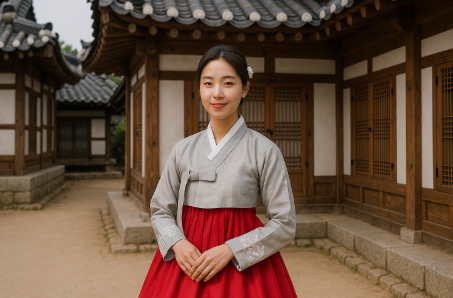“`html
When it comes to contemporary art, South Korea has rapidly become a significant player on the global stage. With a rich cultural heritage and a growing number of talented artists, the Korean art scene offers a unique blend of traditional and modern influences. In this article, we will explore the evolution of contemporary art in South Korea, the influence of traditional Korean art forms, the role of art institutions, and the international recognition Korean artists are receiving today.
The Evolution of Contemporary Art in South Korea
Contemporary art in South Korea has undergone significant changes over the last few decades. The country has transitioned from a period of political turmoil and cultural conservatism during the 20th century to a thriving hub for modern and contemporary art. This transformation began in the late 1980s and early 1990s, paralleling South Korea’s economic growth and increasing openness to global cultural influences.
During this period, Korean artists started incorporating Western styles and techniques, creating a unique fusion with traditional Korean art elements. The art scene began to flourish in metropolitan centers like Seoul and Busan, where galleries and museums played a pivotal role in promoting new artistic movements.
The Influence of Traditional Korean Art Forms
Traditional Korean art forms, such as ink painting, ceramics, and calligraphy, continue to influence the contemporary art scene. These art forms, characterized by minimalism and the use of natural materials, are reflected in the works of many modern Korean artists.
For instance, contemporary artists often fuse traditional elements with modern themes, creating works that are both innovative and deeply rooted in Korean heritage. This blending of old and new allows artists to explore identity, history, and modernity in their art.
The Role of Art Institutions in South Korea
Art institutions in South Korea, such as the National Museum of Modern and Contemporary Art (MMCA) and the Korean Cultural Center (KCC), have been instrumental in the development of contemporary art. These institutions not only provide platforms for artists to showcase their work but also offer educational programs that foster a deeper understanding of contemporary art among the public.
The proliferation of art fairs, such as the Korea International Art Fair (KIAF), and biennials also contribute to the vibrant art scene, attracting collectors, critics, and art enthusiasts from around the world to Korea each year.
International Recognition and Impact
Korean contemporary artists are gaining international recognition, with notable figures like Nam June Paik and Haegue Yang making substantial contributions to global art. Exhibitions featuring Korean artists are increasingly common in prestigious galleries and museums worldwide, highlighting the global appeal and significance of Korean contemporary art.
This international interest not only promotes Korean culture but also emphasizes the universal themes and innovation inherent in Korean contemporary art. As a result, Korean artists have become influential figures in the global art community.
A Closer Look: Korean Artists and Art Movements
| Artist | Art Movement | Impact |
|---|---|---|
| Nam June Paik | Video Art | Pioneering video installation art globally. |
| Lee Bul | Feminist Art | Exploring gender roles and identity. |
| Do Ho Suh | Installation Art | Innovative use of space and perspective. |
These artists, among others, have shaped diverse art movements, creating works that reflect both personal and collective experiences. Their contributions ensure that Korean contemporary art remains dynamic and influential in the global arena.
FAQ
Q: What defines contemporary art in South Korea?
A: Contemporary art in South Korea is defined by its blend of traditional and modern elements, often incorporating themes of identity and global influence.
Q: Are traditional Korean art forms still relevant today?
A: Yes, traditional Korean art forms like ink painting and ceramics remain relevant and influential, often integrated with modern techniques in contemporary works.
Q: How are Korean artists receiving international recognition?
A: Korean artists gain recognition through exhibitions in global galleries, participation in international art fairs, and contributions to major art movements.
Summary
- South Korea’s contemporary art scene has evolved rapidly, merging traditional and modern influences.
- Traditional art forms play a crucial role in shaping modern Korean art.
- Art institutions in South Korea nurture and promote contemporary art through exhibitions and educational programs.
- Korean artists are gaining global recognition and impacting international art movements.
- Notable Korean artists contribute to diverse art forms, enhancing the global art community.
#ContemporaryArt #KoreanArt #NamJunePaik #MMCA #KIAF #ModernArt #ArtFusion #KoreanCulture #ArtMovements #SeoulArt #BusanArt #TraditionalArt #InkPainting #Ceramics #Calligraphy #KoreanArtists #GlobalArt #ArtExhibitions #ArtFairs #ArtInstitutions #KoreanCulturalCenter #ArtHistory #InnovationInArt #IdentityInArt #GlobalRecognition #FeministArt #InstallationArt #VideoArt #CulturalHeritage #ArtEducation #ArtCommunity #ArtGalleries #ArtCritics
“`
